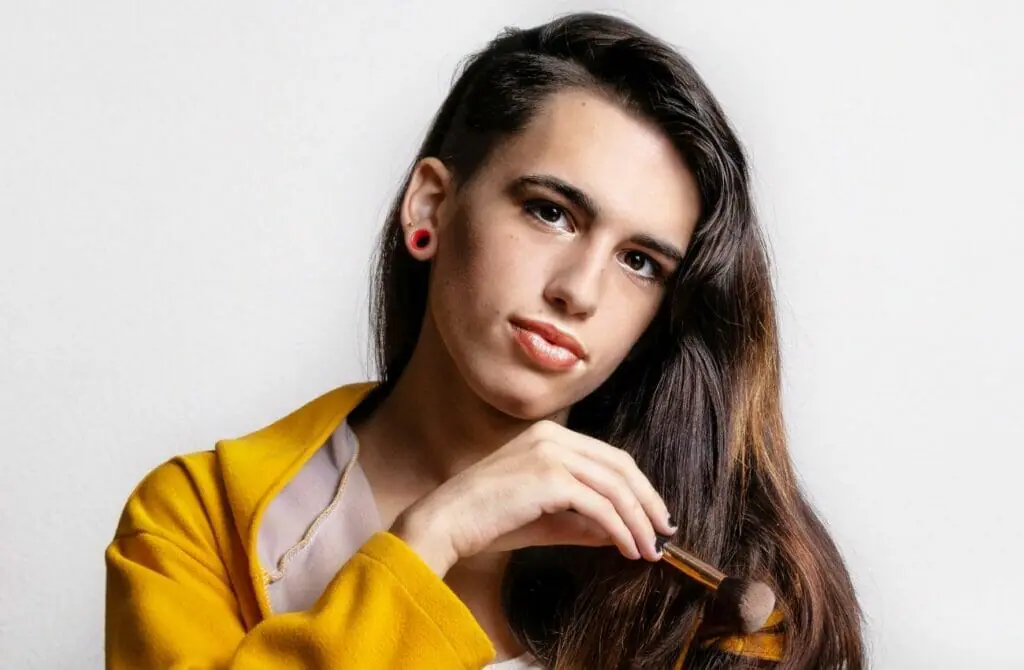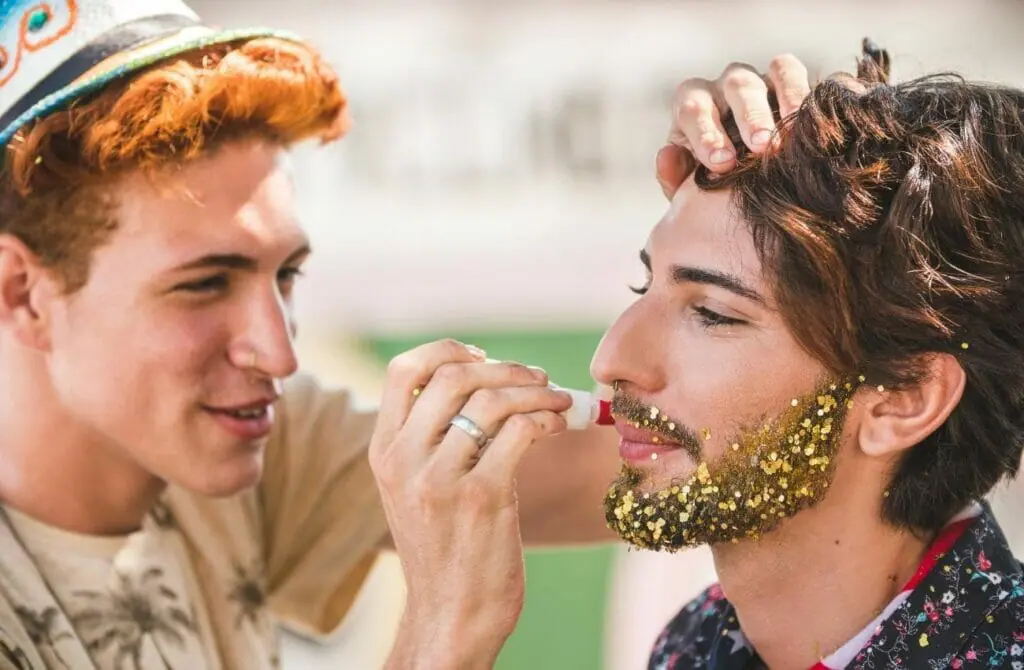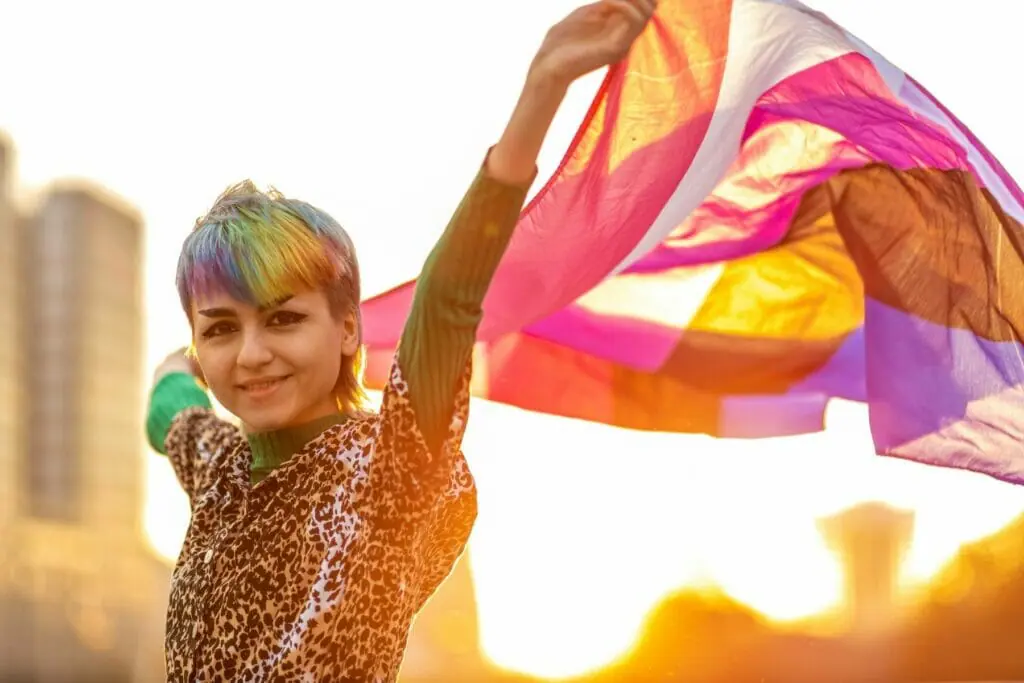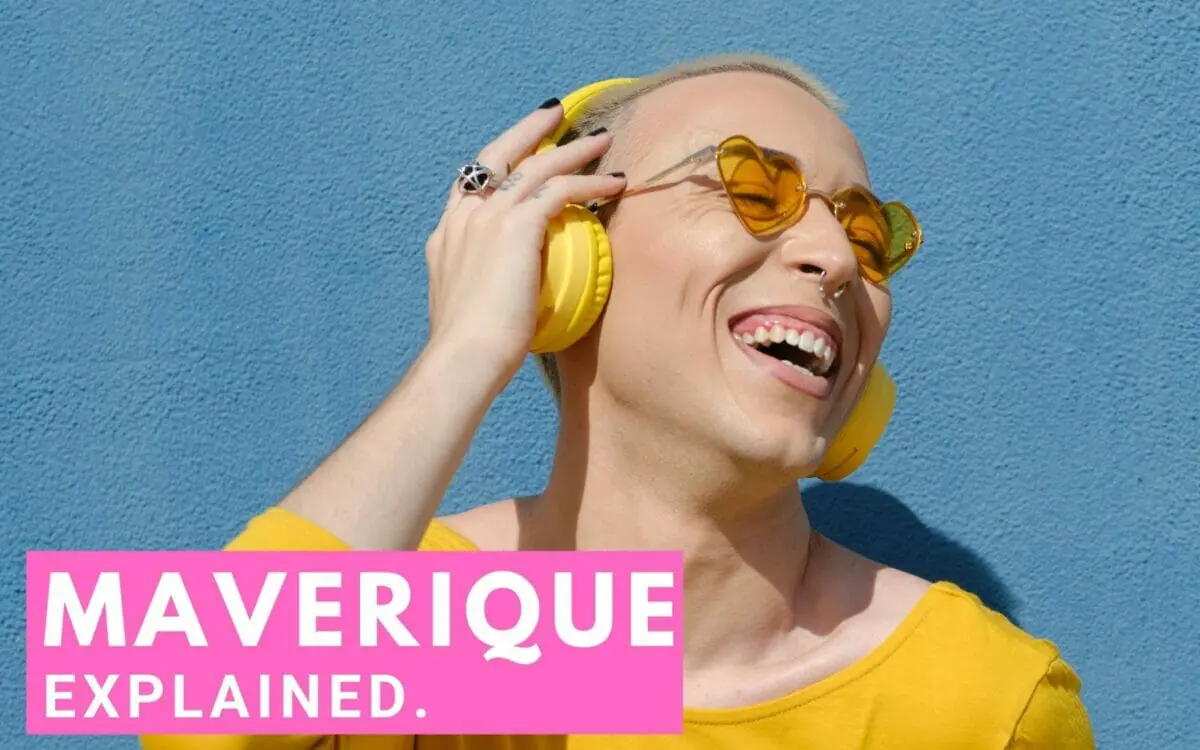Anyone can feel attached to or identify with a diversity of gender identities and/or sexual orientations. And as evermore definitions have been popularised over the years to embody the emotions and experiences of queer people, it can be hard to keep up.
If you are not totally absorbed in LGBTQ+ culture or the rainbow community, you may not appreciate these lesser-known sexual orientations and gender identities – most of which have a lack of representation in mainstream media.
One such term is maverique, so we are going to define and cover what does maverique mean, speak about the maverique pride flag, and then provide some tips to help you become a better ally to maverique people.
In this article we will cover...
What Does Maverique Mean?
Maverique is a non-binary gender that is completely different from male, female, neutral, and everything that comes with it. However, maverique is anything but genderless.
The gender maverique is a distinct gender (it is not an umbrella term because it is an aporagender) that is defined by the following characteristics:
– Having nothing to do with being a man, woman, or neutral, or any gender that is among these or shares anything of them. It also has nothing to do with masculinity, femininity, or neutrality.
– Being on the outside of the gender spectrum.
– The difference between maveriques and neutral gender is that maveriques don’t have a passive or neutral perspective regarding their gender(s).
– They are also beyond the gender spectrum because being maverique, by definition, does not imply having no gender, but rather the polar opposite.
Vesper H., the creator of the Queer As Cat blog, developed the phrase in 2014 to characterize his own genre. The phrase comes from the combination of the English word “maverick” with the French suffix “-ique.” It’s a noun and an adjective at the same time.

People who identify as maverique include those who have only one gender, those who are bigender and identify one as maverique, those who are genderfluid and identify maverique as one of their genders, and those who are genderflux maverique, among others. A maverique can refer to themselves as a mav, and maveriques as a group can be referred to as mavs. “Those three folks are mavs, and they’re all content with their gender,” for example.
The name “Maverick” was chosen because of its connotation with the unconventional, alluding to the fact that maverique as a gender is unconventional, even among numerous nonbinary genders, due to its lack of ties to the gender binary.
While the term “maverick” indicates a purposeful, rebellious unconventionality, being maverique is neither a conscious choice nor a stand against the gender binary. The suffix “-ique” implies “similar to” but not identical, implying that, while unorthodox like maverick, maverique is distinct in that it is a personality trait rather than an intentional choice.
This shows that a maverique’s gender is not unconventional by choice, nor is it a political stance. The gender of a maverique is maverick-like, but the maverique is not a maverick because of it. The name maverick also connotes independence from one’s environment, implying that maveriques are not bound by the gender binary.
As opposed to the third gender, maverique can be used to describe anyone of any race or cultural background if they consider it appropriate.
Furthermore, the term “third gender” is used to group together several gender experiences from a diversity of cultures that do not fit into the Western idea of male or female, whereas maverique is about one gender.

Maverique Pride Flag
There are many different pride flags symbolizing most queer identities, so it should come as no surprise there is a flag for maverique people to proudly fly.
Vesper also designed the Maverique pride flag, which was released on June 15. The following are the meanings of the colors: Yellow, which denotes primary gender, is a primary color, meaning it is distinct from the other primary hues, much like maverique is distinct from masculinity and femininity. Non-binary gender is frequently related with the color yellow.
From both the gender binary and the color spectrum, white denotes independence and autonomy. White is the gender-neutral canvas on which maverique is built. Mavericks are symbolized by the color orange, which indicates a fiery inner conviction as well as their unconventional and unique personality.
The astrological symbol for the sun was the initial suggested emblem for maverique, but it was questioned because the sun is connected to binary genders in several cultures. The comet symbol was proposed as a maverique symbol, and is still used on occasion, albeit it is also used as a non-binary symbol in general.
In February 2017, Tumblr user Sneer created the maverique symbol. The outer, filled-in circle reflects the gender binary, while the inner, empty circle represents maveriques’ exclusion from it. The sun sign is also interwoven into the symbol in some way.
Maverique Pride Day
Education, visibility, commemoration, and appreciation are all critical in promoting global acceptance and acknowledgment of queer identities and queer folx in general. And from experience, we know it is easier for queer people to talk to friends and loved ones – and to feel the love – when a worldwide day for them is observed. Not to mention it also helps foster awareness and increased sensitivities from society at large.
Sadly however a Maverique Pride Day has not yet been designated. But that does not stop you from marking your calendar and doing something special (even if it’s just a social media post!) next pride month!
Or any other day of the year, to be honest.
Other Maverique Information to Help You Be A Better Ally
Like other LGBTQIA+ identities, not much is known about maverique by the general public. Even that little which is known, can be a little confusing and lead to misconceptions.
No maverique experience is identical to another. You can’t tell whether someone is maverique by looking at them, observing their personality, or their physical aesthetic. None of these characteristics can provide a clue as to how a person identifies, and this is as true for maverique individuals as it is for any gender or sexual orientation.
The first thing you should do as an ally to maverique people is to believe them when they tell you about their identity. Don’t try to argue them out of it or make the mistake of thinking you could know more about how they feel than they do. It could also help if you worked on your mindset. Working on your attitude means you challenge your concept of gender, sexuality, and sex.
After all, if you have any issues with understanding maverique people, the root cause is bound in your understanding of gender and sexuality – not theirs. Educating yourself (as you are by reading about what does maverique mean?) is an excellent first step to increase your awareness and not make your lack of knowledge in this area a burden on them.
There aren’t any explicit rules or guidelines, but here are some thoughts on how you can be a better ally and support a loved one as you discover what it means to be maverique.

Always ask for pronouns
Not much is known about the pronouns mavs prefer but it’s always better to ask. Remember that mavs do not identify with male, female, neutral, or any aspects related to them. When talking to mavs, introduce yourself using your preferred pronouns and then ask them what they prefer.
It is a valid identity
The definition of maverique can be a little confusing to some people. Even so, understand that it is a valid identity. If someone feels like the description of maverique suits them, then their feelings are valid.
Keep in mind that you don’t have to understand someone’s identity for you to respect them. It is ok to not have all the information about someone’s identity or have it and not understand it. However, it’s crucial that you respect them either way.

It is not a choice
People’s identities are what they feel about themselves. They didn’t make a choice to feel this way. Remember that even if their gender identity changes, they did not choose for it to happen that way. Their feelings changed.
Be sensitive about asking questions
Naturally, you might be curious about an identity you’ve never heard of or encountered. However, it’s vital that you are sensitive in your approach. It’s not the best thing to ask someone direct questions about their identity if they haven’t expressly mentioned that they are comfortable talking about it.
Rather than asking mavs direct questions, it would be best to check out online resources such as this one for the information you seek. Remember to keep someone’s identity private and confidential if they aren’t comfortable talking about it.
In any case, not all situations and environments are ideal to talk about LGBTQIA+ identities especially if there is still an issue with acceptance.





